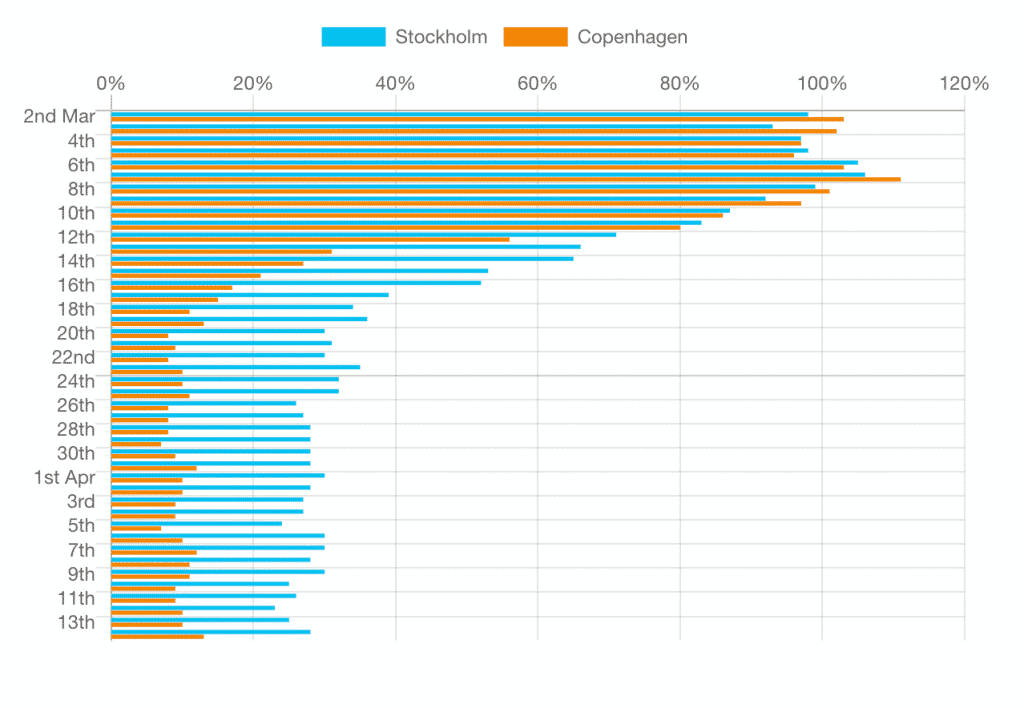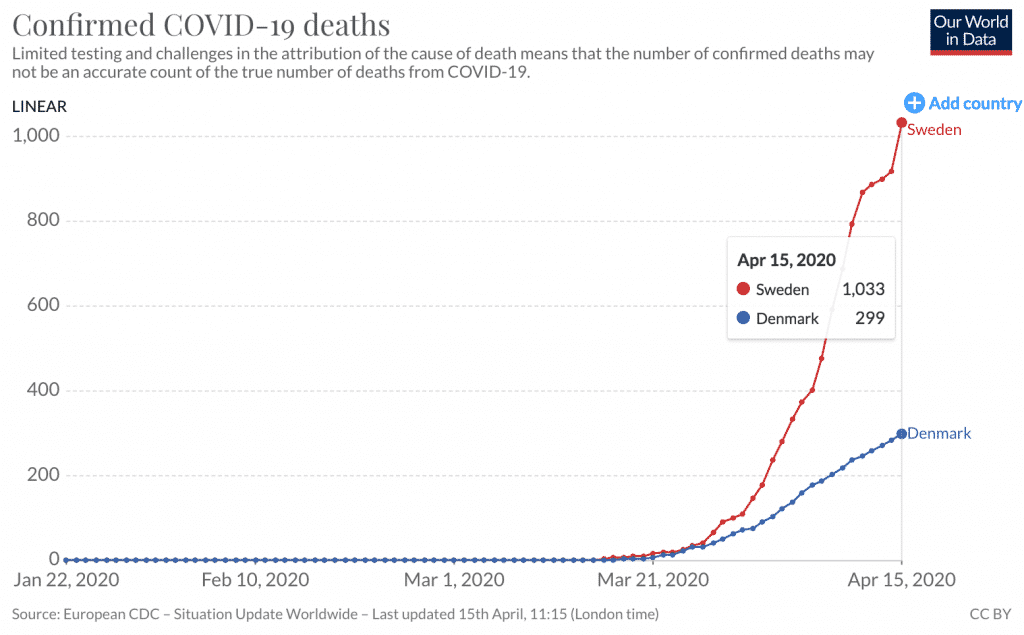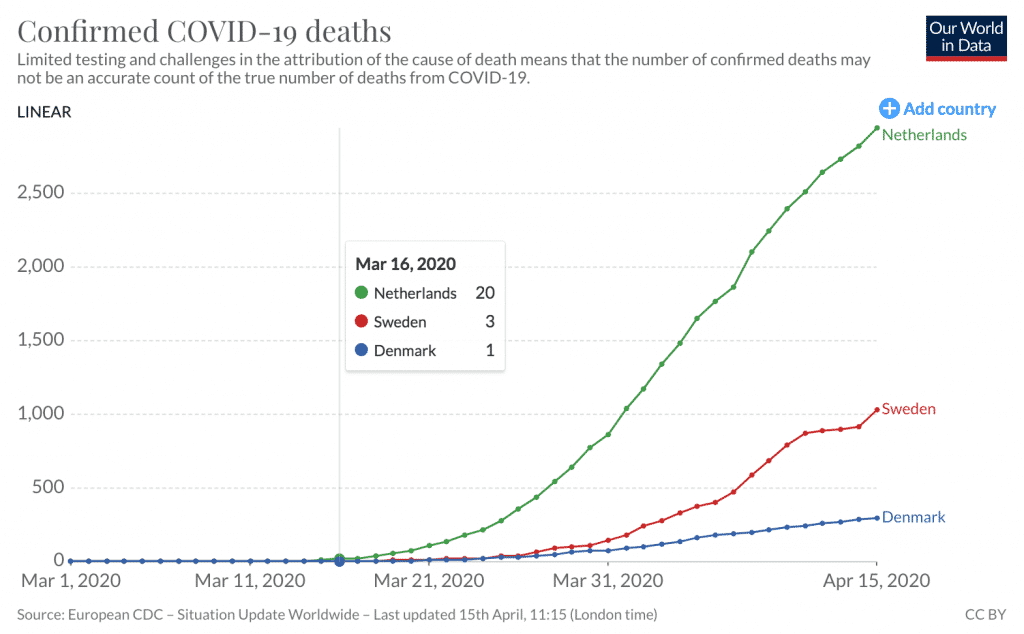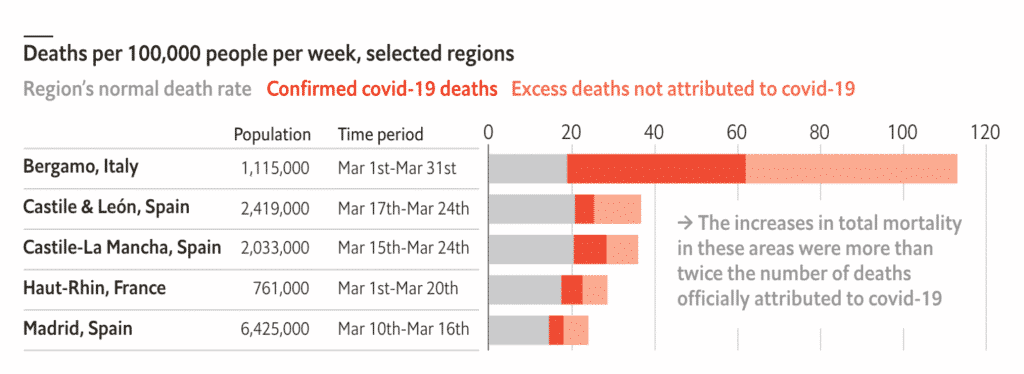Over the last 48 hours there has been a preponderance of the view that Sweden has somehow successfully contained Sars-Cov-2 without shutting down the economy. While many are simply questioning whether there is a diminishing return from shutting down, others seem to be critiquing the utility of social distancing. You can see an example from an independent right wing website, below:

However, I have struggled to find any evidence whatsoever that Sweden has been successful in its handling of Covid, at least if you consider, as I do, that hundreds (or even thousands) of unnecessary deaths are a sign of failure.
Perhaps the easiest country to compare with Sweden is Denmark. Now, Denmark has more porous borders than Sweden and is half the size, so that’s something worth keeping in mind. But besides that they are similar societies and close neighbours. The main difference in their Covid-19 response is that Copenhagen reduced movement by about 90% a few days before Sweden reduced movement by about 70% – 80%.

Do not believe the myth that Sweden has continued with ‘business as usual’. That is simply not the case, though it is true that it has remained more active than other countries. As you can see, the most recent data from City Mapper suggests that Swedes in Stockholm are about twice as active as their Danish friends in Copenhagen, but they are still only about 30% as active as normal.
The price Sweden have paid for being twice as active is three times as many deaths, as at April 15, according to Our World In Data.

Now, even if you want to assess deaths on a per capita basis, Sweden has about 60% more deaths, so far, and is on a steeper trajectory.
Now there are certainly other countries you could compare with Sweden. For example, if you look at Netherlands (which has a bigger population), you see a higher per-capita death rate, despite the fact that the countries shut down at around the same time, and Netherlands did it much harder.


However, whereas Denmark and Sweden had their first deaths (and outbreaks) at around the same time, the Netherlands’ epidemic got started significantly earlier than Sweden’s. By 16 March, when the shutting down of society started in earnest, Denmark had one fatality, Sweden had three fatalities while the Netherlands already had 20.
Therefore, I would suggest that Sweden and Denmark make for a better comparison than Sweden and Netherlands, but both are useful.
What I see, when looking at this data, is that the timing of the shutdown relative to the level of infection is at least as important, but probably more important, than the degree of the shutdown. If so, that confirms what proponents of a shorter sharper lock-down have been saying – you can minimise the economic pain by acting early, but not by acting late.
What I do not see is any evidence that Sweden’s approach is superior to a stronger lockdown, at least if saving lives is a priority. At present, Sweden is on track to record far more deaths than its best comparable (in my opinion), which is Denmark.
We may not get to see what a continuation of this approach looks like. According to Forbes, a group of researchers “from a range of top Swedish universities and research institutes… say that elected politicians must now intervene with ‘swift and radical measures’.”
Finally, if reports that COVID patients over the age of 80 are not being transported to ICU from nursing homes are true, then the true Covid related death toll may be much higher than reported. Of course, as this excellent Economist article points out, that is hardly a rare phenomenon.

It certainly is possible that timing of a shut-down is far more important than severity of a shut-down, but to me the real-world evidence suggests that stricter social distancing saves many, many lives.